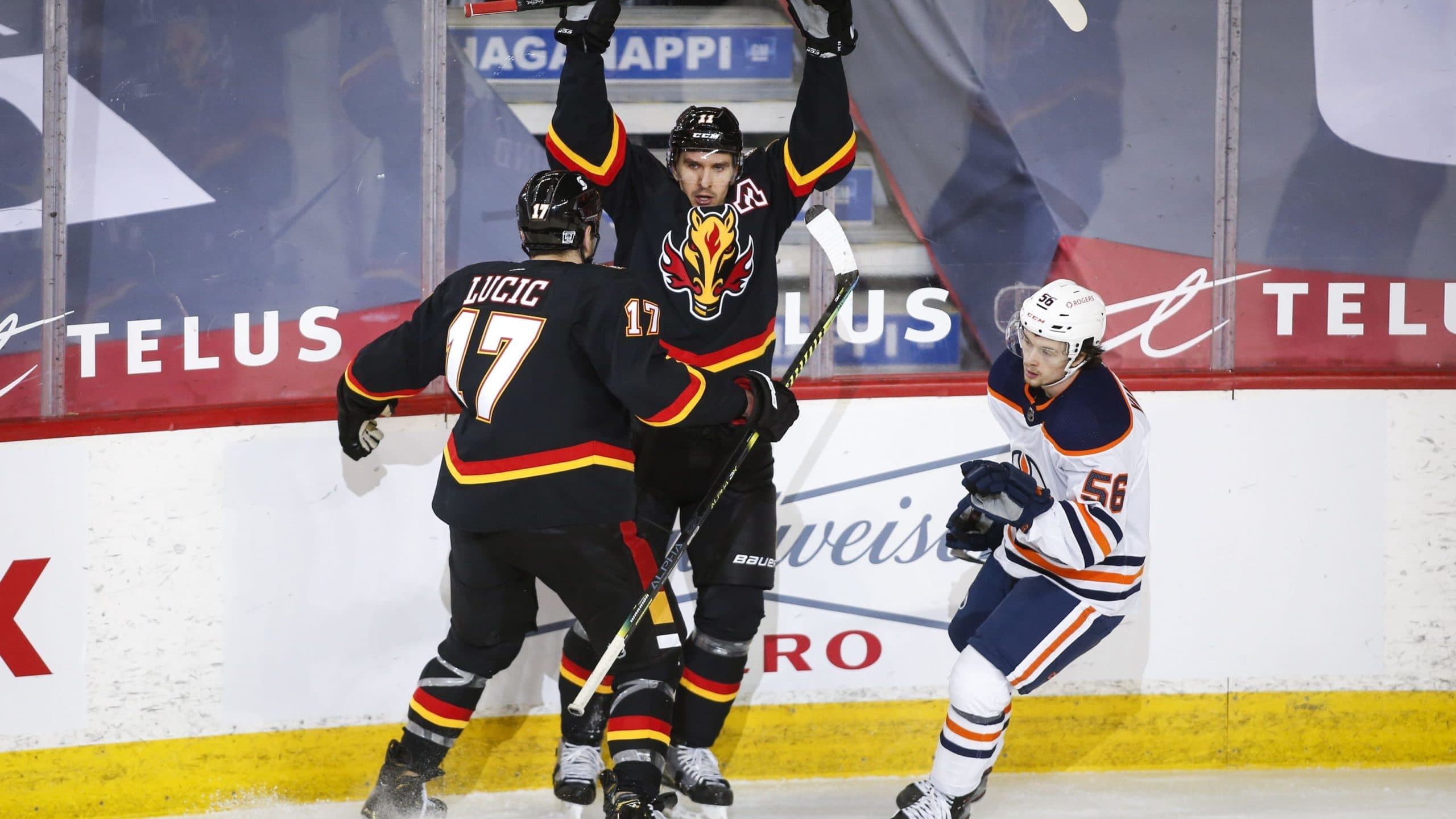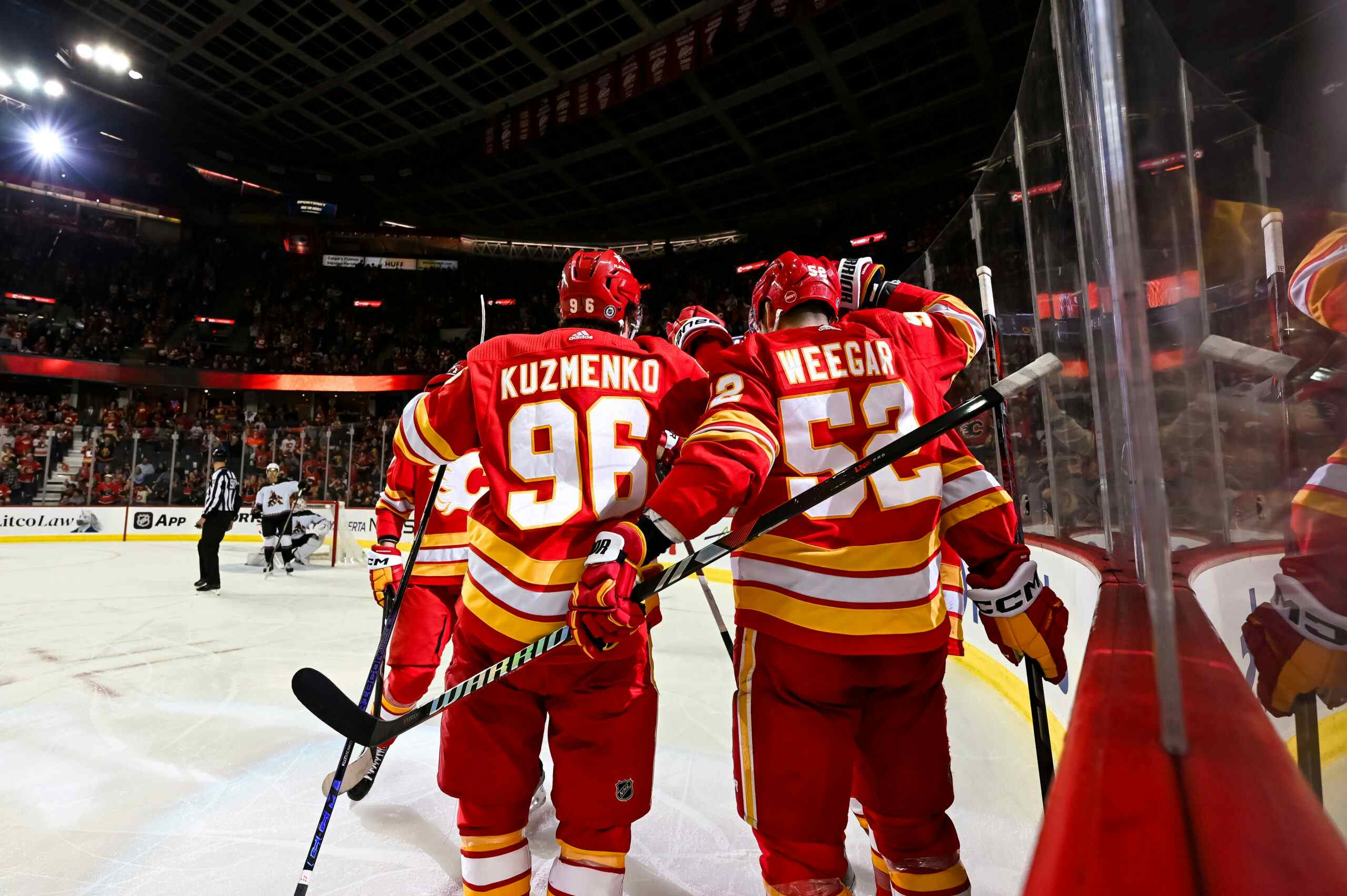How does the new American TV deal impact the Flames?

By Ryan Pike
3 years agoThis past week, the National Hockey League made a big deal with widespread implications. The league announced a new seven year broadcast deal with ESPN that’ll pay the league around $400 million per season from 2021-22 through 2027-28. It’s part of what’s expected to be a two-pronged broadcast scheme paying around $600 million per season, triple the current deal.
While the deal may sound exciting, the looming spectre of escrow will prevent it from having an immediate impact on the salary cap.
How the salary cap is set
Under the terms of the 2013 collective bargaining agreement, players collectively receive half of hockey related revenues (HRR). So the cap is, broadly speaking, half of league-wide HRR, divided up among the 31 teams.
The cap used to be determined around the NHL Draft for the following season based on projections for league revenue growth, but in the new CBA they’re using the growth rate from the last two seasons to determine it – they’re trying to ensure that cap growth doesn’t go faster than revenue growth. (The new cap formula is called the “lag formula.”)
Much ado about escrow
We’ve written about escrow a lot over the past couple years. Basically, because the cap was based on estimates under the old formula, the CBA had escrow built into it to ensure that the players only receive their proper 50% share. So… the league would hold onto a percentage of everyone’s salary and once the financial audits of revenues were done – often a couple years after the fact – players would get part of that holdback paid back to them.
As you can imagine, players hated that.
Even before the pandemic, the players wanted to fix escrow. But when the NHL halted their season in mid-March 2020, they basically lost around $1.1 billion in revenue. But players were basically paid in full for their half of an expected $4.9 billion in revenue. As a result of the season halting, the players were getting a good deal more of their 2019-20 50% share… and under the terms of the CBA, they were expected to pay that roughly $580 million shortfall back out of future collective earnings – more escrow!
Going ahead with the playoffs over the summer added a reported $450 million to league revenues (the player half went to escrow) and players let the league keep their last paycheck of last season, taking $110 million off the escrow account. But that still would leave around $250 million to pay off from 2019-20.
No fans, no revenue… no real cap growth
Things got worse from an escrow perspective this season by virtue of the NHL proceeding with games without fans. The Athletic’s Sean Shapiro estimates that league-wide HRR will come in around $2 billion this season and that the escrow debt owed will be north of $800 million following this season.
The NHL is operating under the assumption that next season will be normal, or at least close to it. With a flat cap in 2021-22 at $81.5 million and 14% escrow holdback, that’s around $365 million paid off the escrow debt. With another flat cap year anticipated in 2022-23 and 10% escrow holdback, that’s around another $250 million paid off. (This assumes that league revenues return to normal, and the $400 million increase in broadcast revenues gives the league wiggle room.)
If we presume that next year’s HRR is $5 billion – a slight attendance decrease from pre-pandemic 2019-20 off-set by the broadcast bump – and then 2022-23 is $5.4 billion – normal attendance plus the broadcast bump (half of which goes to paying down player escrow) – then two seasons of a flat cap basically pays off the entire pandemic escrow debt (or very close to it).
In other words…
As specified in the new CBA, the NHL and NHLPA can bump the cap up by $1 million per team once league revenues exceed $4.8 billion if there’s an escrow debt still left to pay off. Once the escrow debt is paid off – again, probably after 2022-23 – they’ll transition towards the “lag” formula and they’ll begin more substantial changes to the cap going forward.
This is a long way of saying that assuming everything is back to normal…ish in 2021-22, the earliest that the boost in broadcast money from the ESPN deal (and the other anticipated deal) could boost the salary cap in a substantial way would be 2023-24.
Recent articles from Ryan Pike





